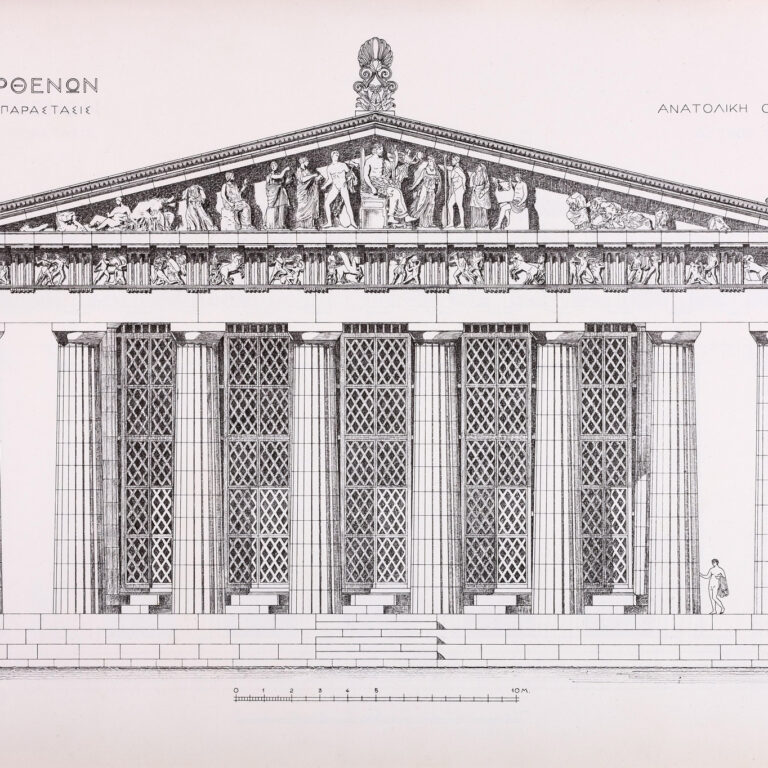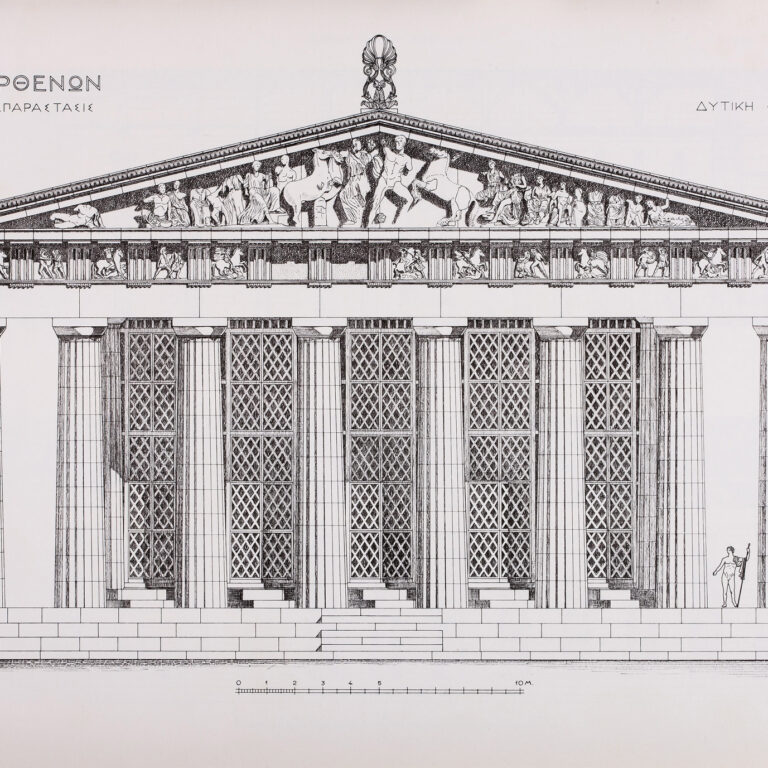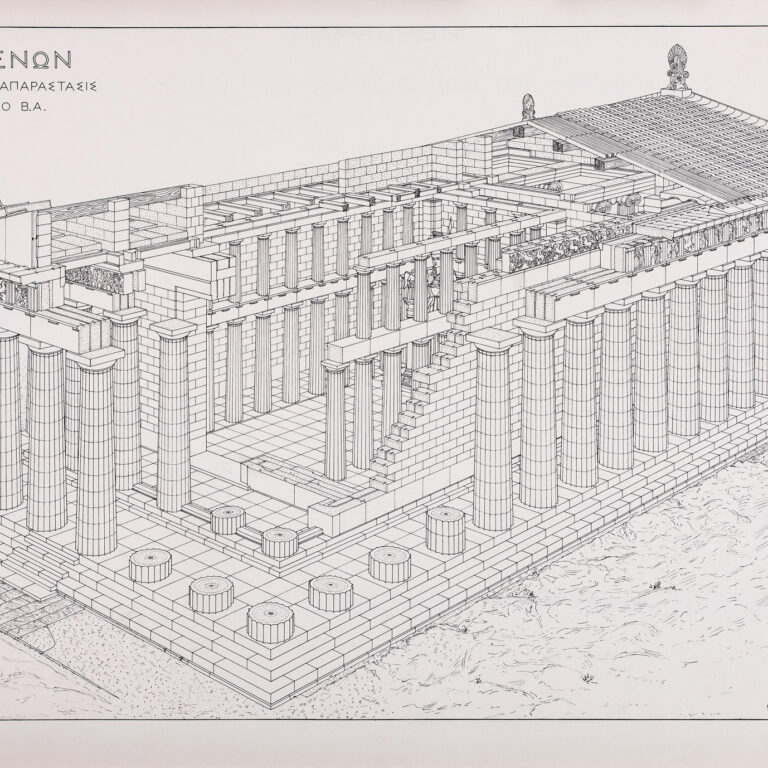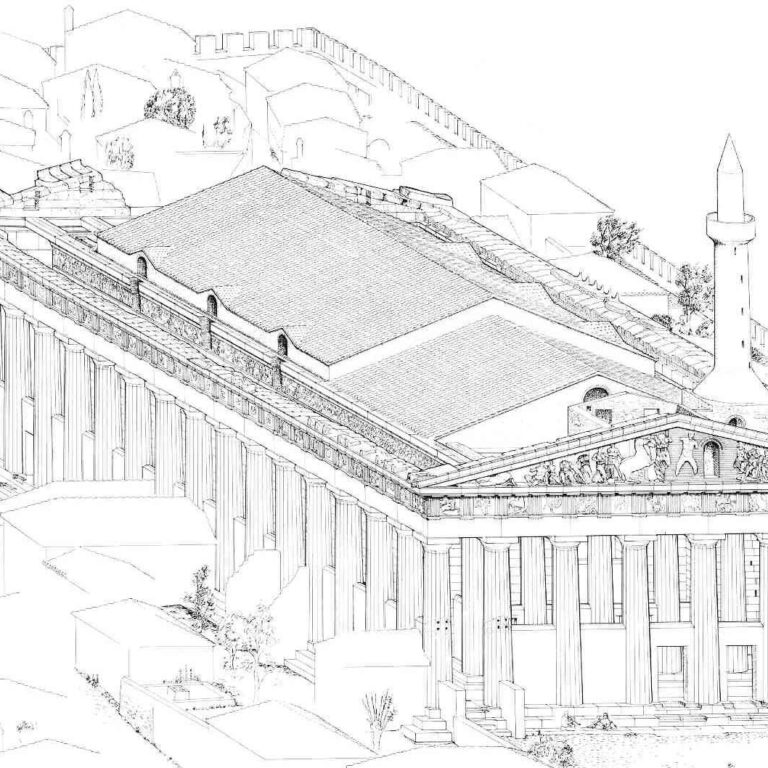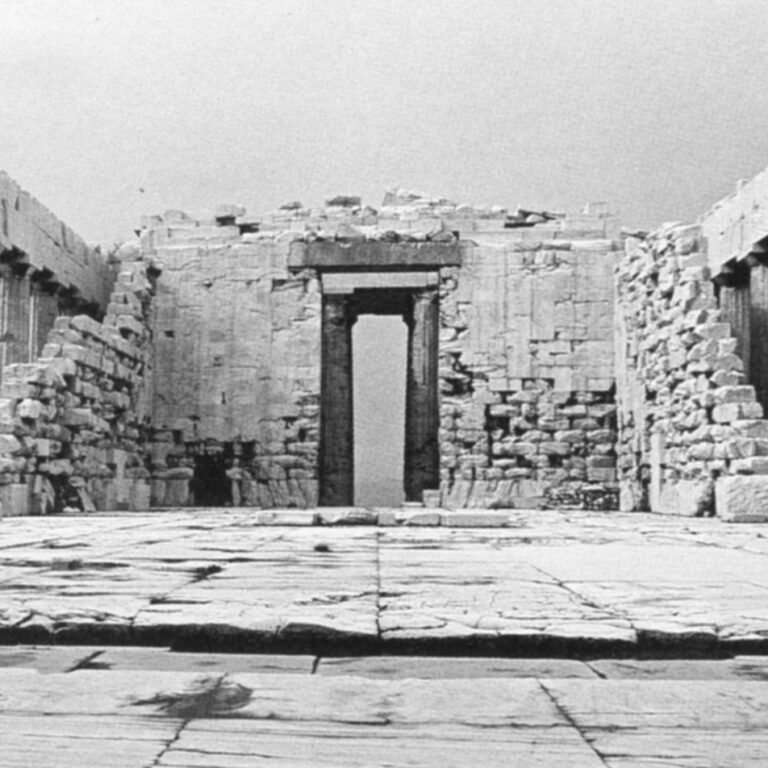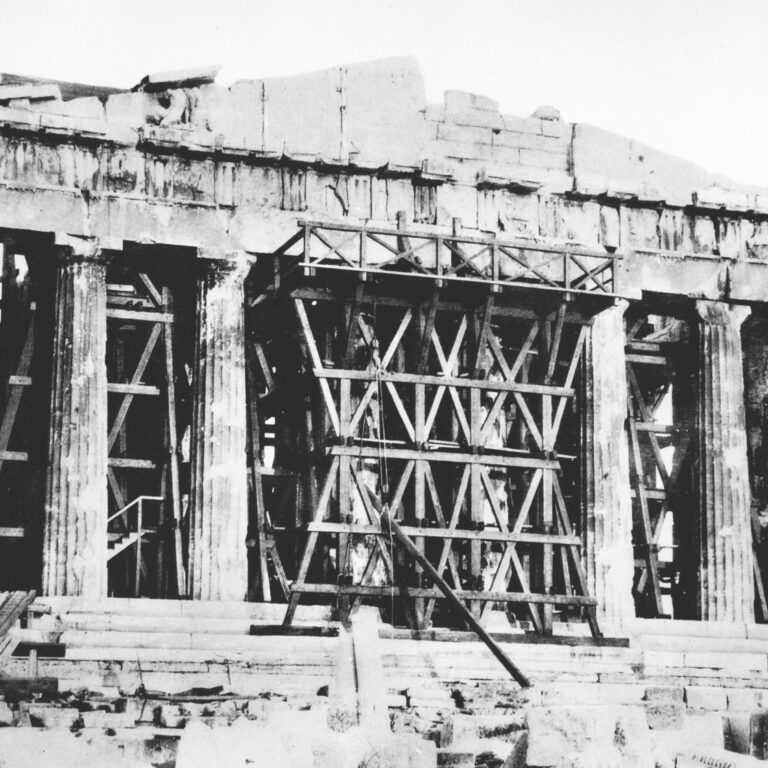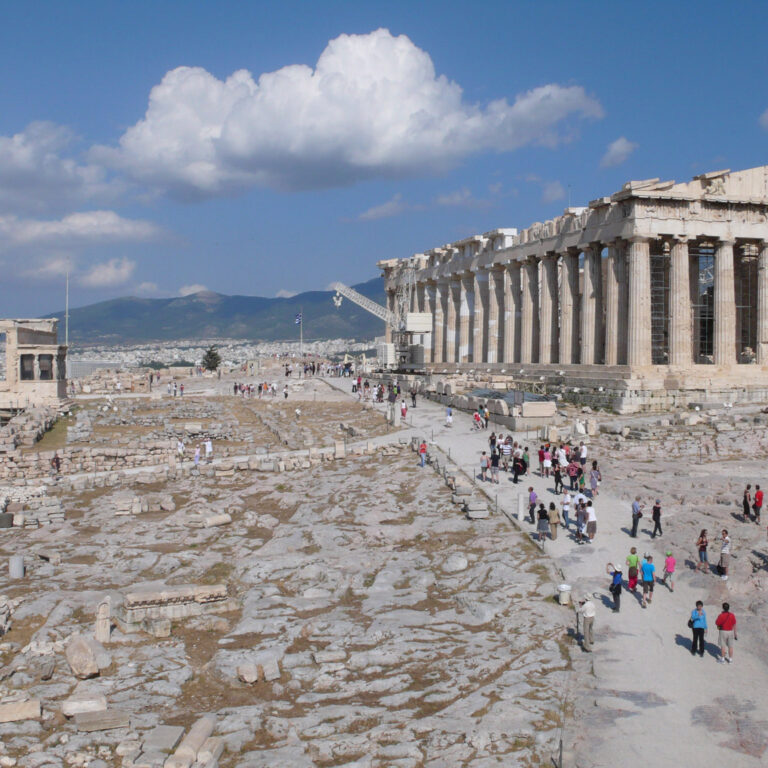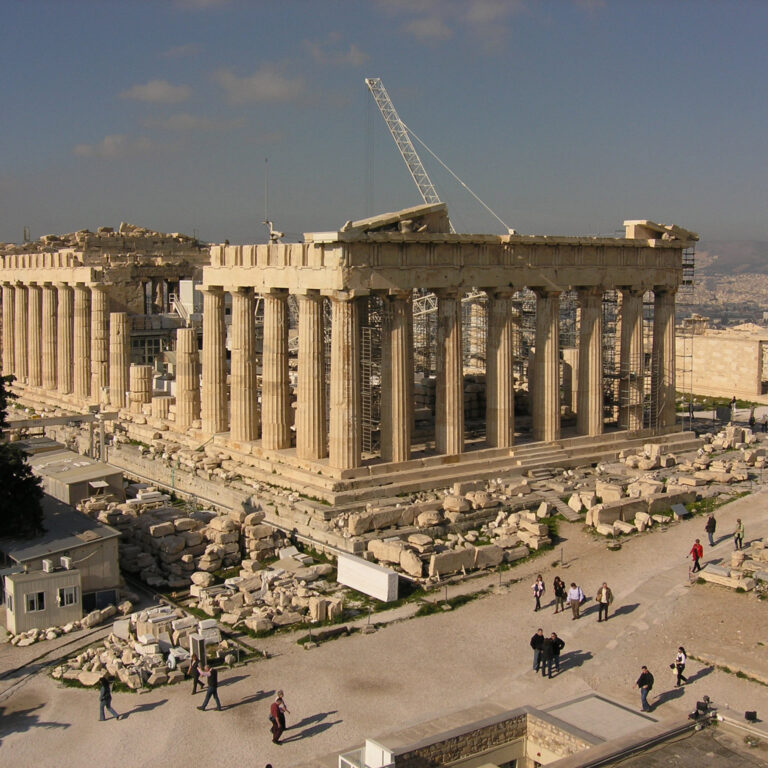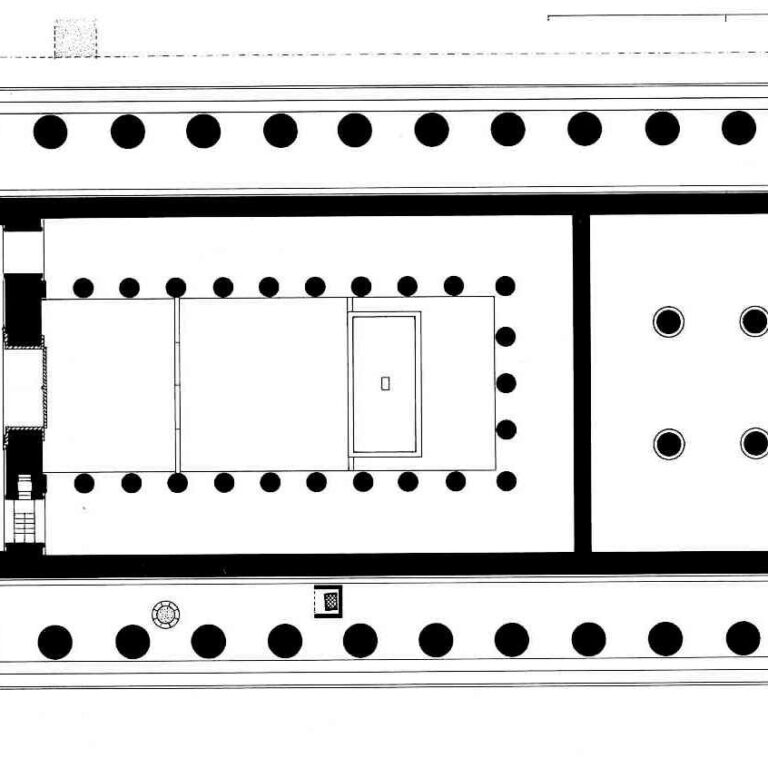
After the decision of 448 B.C. to rebuild the sanctuaries that had been destroyed by the Persians, the Parthenon was the first building that the Athenians dedicated to the goddess Athena, protectress of the city. It was a temple in the Doric order, peripteral, with eight columns at the narrow ends and seventeen along the sides, hexastyle porches (pronaos and opisthonaos) and many Ionic features. The temple, built on the site of an earlier temple, the pre-Parthenon (490-480 B.C.), dominated the rock because of its proportions, the perfection of its construction and the richness of its sculptural decoration. It is attributed to the architects Iktinos and Kallikrates, with the general supervision of the work and responsibility for the sculptural programme in the hands of the sculptor Pheidias. The construction of the temple lasted from 447 to 438 B.C., while the pedimental sculpture was completed only a few years later, in 432 B.C.
In plan, the main temple is divided into three parts: the pronaos (front porch), the cella (sanctuary) and the opisthonaos (rear porch). The cella was divided by a cross wall into two unequal spaces, a larger one to the east and a smaller one, the opisthodomos, at the west. In the east space, in front of a two-storied colonnade forming a Π, stood the chryselephantine (gold and ivory) cult statue of Athena, a work by the sculptor Pheidias. The goddess was shown in her warrior aspect, standing, armed, holding a Nike (Victory) on her outstretched right hand and resting her left upon her shield. The opisthodomos at the west, accessible through the opisthonaos, had four Ionic columns, which supported the ceiling. From 433 B.C. on, this is where the public funds of the city were kept.
A highly sophisticated system of “refinements” was employed in the Parthenon to alleviate the “heaviness” of the Doric style and to give the building grace and harmony: the curve of the crepis, the stylobate and the entablature, the entasis (convex curve) of the columns, the contraction of the corner intercolumniations, and the decrease in width of the metopes from the centre to the corners.
Its sculptural decoration was an integral part of the temple. It was executed with unique sensitivity and artistic skill by a group of sculptors headed by Pheidias. Represented in the pediments are two basic episodes in the life of the goddess Athena: her birth, in the East Pediment, and her contest with the god Poseidon, in the West. The scenes shown in the metopes are inspired by mythical struggles: on the east side is shown the Gigantomachy, on the west the Amazonomachy, on the south the Centauromachy, and on the north side scenes from the Trojan War. Unique for a Doric temple is the Ionic frieze that encircles the exterior of the cella and the two interior porches. The frieze shows a theme drawn from the life of Athens, the great festival of the city, the Panathenaia. The temple’s acroteria too are of special interest, with Nikes on the corners and a floral design on the apex.
The building remained intact in all its perfection for centuries. In late Roman times it suffered serious damage from fire. It was repaired in the 4th century A.C., probably during the reign of the emperor Julian. Shortly after that, the temple underwent alterations so that it could function as a church. During the mid-Byzantine period a considerable number of inscriptions were made in the columns of the Parthenon and a good many wall paintings were added. In 1205, the temple was dedicated to the Holy Mother of Athens. The stairway that was built in the south corner of the opisthonaos is also attributed to the time of the Latin occupation. A few decades after the taking of Athens by the Turks in 1460, the Parthenon was changed into a mosque and the stairway became a minaret. The greatest catastrophe in the entire history of the temple occurred in 1687 when it was bombarded during the siege of the Acropolis by the Venetians. The explosion of the gunpowder that the Turks had stored within the monument caused extensive parts of the temple to collapse and turned the monument into a ruin. This picture of destruction was completed during the 19th century with the systematic removal of the sculpture of the temple by Lord Elgin. Eighteen pedimental statues, 15 metopes and 56 blocks of the Ionic frieze were ruthlessly severed from the Parthenon.
With the founding of the Greek State in 1833, the Parthenon took on the character of a national symbol. This is when the first efforts were made to restore it and to remove the additions of mediaeval and more recent times. An important landmark in the modern history of the monument is provided by the restorations carried out by N. Balanos during the years 1896-1902 and 1923-1933. These have given the monument its present appearance.


